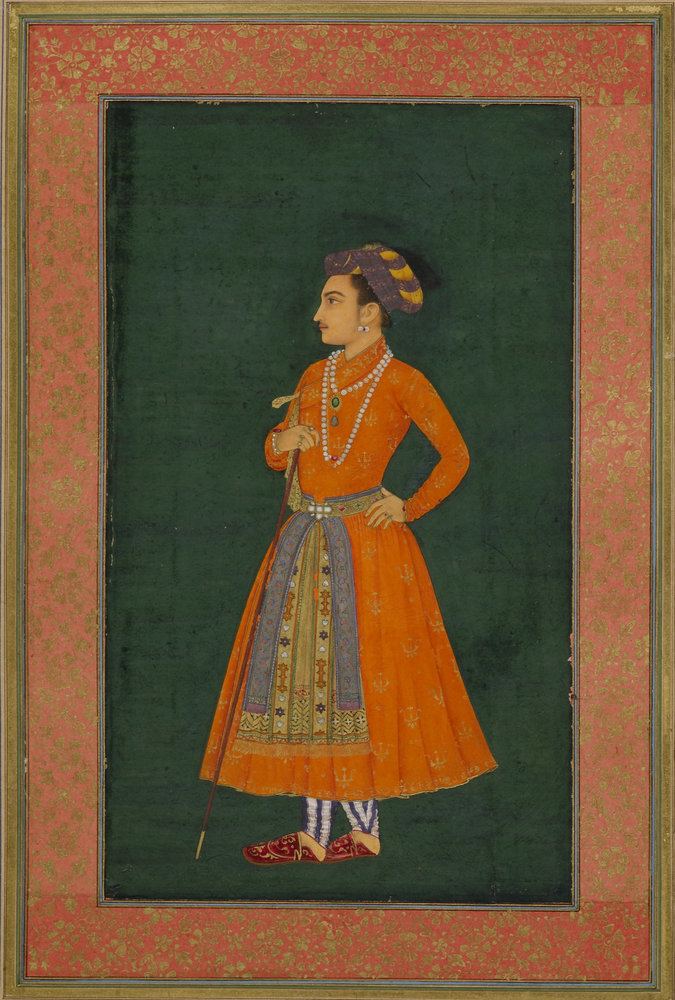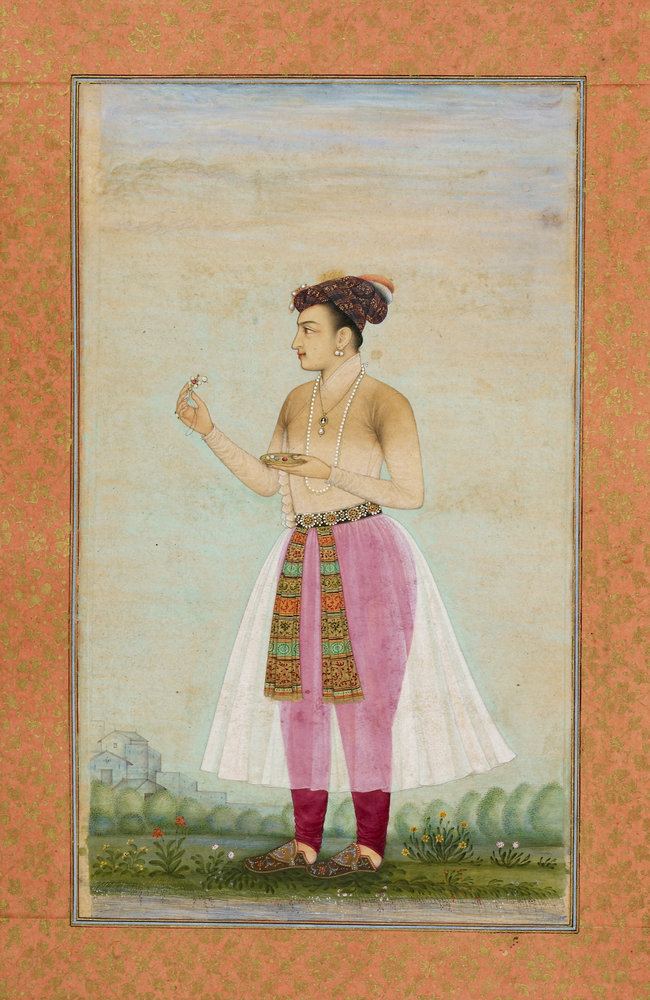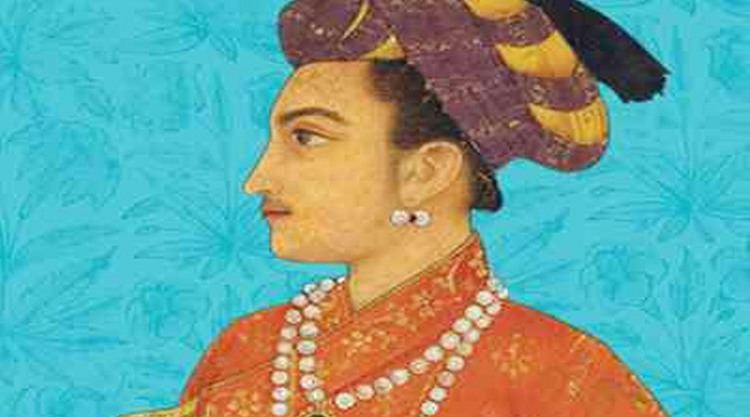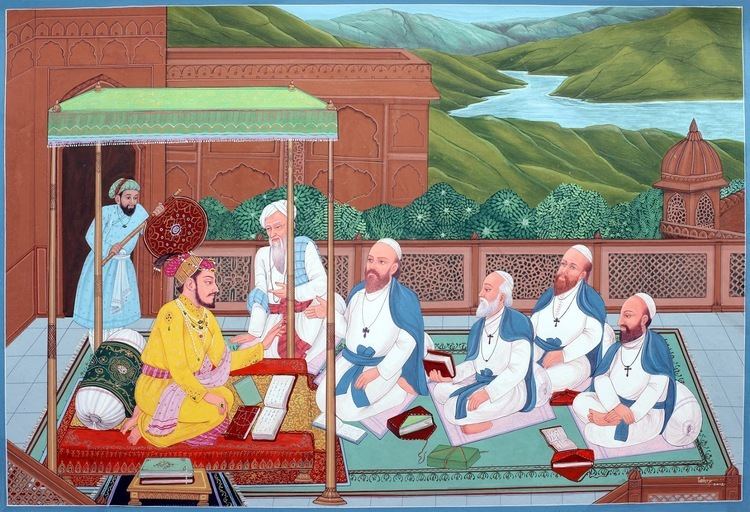Burial Tomb of Humayun, Delhi Name Dara Shikoh House Timurid Buried Humayun's Tomb, New Delhi | Father Shah Jahan Mother Mumtaz Mahal | |
 | ||
Born 28 October 1615Ajmer, Rajasthan, India ( 1615-10-28 ) Died 30 August 1659(1659-08-30) (aged 44)Delhi, India Issue Sulaiman ShikohMumtaz ShikohSipihr ShikohJahanzeb Banu Begum Assassinated August 30, 1659, Delhi, New Delhi Spouse Nadira Banu Begum (m. 1633–1659) Books Majmaʿ-ul-Bahrain Or the Mingling of the Two Oceans Similar People Aurangzeb, Shah Jahan, Jahanara Begum, Murad Bakhsh, Mumtaz Mahal | ||
Siblings Aurangzeb, Jahanara Begum | ||
Auranagabad : Rename Controversy Who Is Dara Shikoh
Dara Shukoh, also known as Dara Shikoh (20 March 1615 – 30 August 1659 Julian/9 September 1659 Gregorian) was the eldest son and heir-apparent of the fifth Mughal Emperor Shah Jahan. His name ″دارا شكوه″ in Persian means "as magnificent as Dara, a diminutive of Darius". He was favoured as a successor by his father, Shah Jahan, and his elder sister, Princess Jahanara Begum, but was defeated and later killed by his younger brother, Prince Muhiuddin (later, the Emperor Aurangzeb), in a bitter struggle for the imperial throne.
Contents
- Auranagabad Rename Controversy Who Is Dara Shikoh
- Family
- Marriage
- Military service
- The struggle for succession
- Death and aftermath
- Intellectual pursuits
- Patron of art
- In popular culture
- Full title
- Governorship
- Works
- References

The course of the history of the Indian subcontinent, had Dara Shukoh prevailed over Aurangzeb, has been a matter of some conjecture among historians.

Family

Dara Shukoh was born Taragarh fort Ajmer on 28 October 1615, the eldest son of Prince Shahab ud-din Muhammad Khurram (Shah Jahan) and his second wife, Mumtaz Mahal. Shukoh means grandeur, glory or splendour. When he was 12, his grandfather, Emperor Jahangir, died, and his father succeeded as emperor. Dara's siblings included his elder sister Jahanara Begum and their youngers siblings Shah Shuja, Roshanara Begum, Aurangzeb, Murad Bakhsh, and Gauhara Begum. Aurangzeb became the sixth Mughal Emperor.
Marriage

On 1 February 1633, Dara Shukoh married his first cousin, Nadira Banu, the daughter of his paternal uncle Sultan Parvez Mirza. By all accounts, it was an extremely happy and successful marriage. Both Dara Shukoh and Nadira were devoted to each other, so much so that Dara Shukoh never contracted any other marriage after marrying Nadira. The couple had eight children, of whom two sons and two daughters survived to adulthood.
Military service

As was common for all Mughal sons, Dara Shukoh was appointed as a military commander at an early age, receiving an appointment as commander of 12,000-foot and 6,000 horse in October 1633 (roughly equivalent to a modern division commander or major general). He received successive promotions, being promoted to commander of 12,000-foot and 7,000 horse on 20 March 1636, to 15,000-foot and 9,000 horse on 24 August 1637, to 10,000 horse on 19 March 1638 (roughly equivalent to lieutenant general), to 20,000-foot and 10,000 horse on 24 January 1639, and to 15,000 horse on 21 January 1642.
On 10 September 1642, Shah Jahan formally confirmed Dara Shukoh as his heir, granting him the title of Shahzada-e-Buland Iqbal ("Prince of High Fortune") and promoting him to command of 20,000-foot and 20,000 horse. In 1645, he was appointed as subahdar (governor) of Allahabad. He was promoted to a command of 30,000-foot and 20,000 horse on 18 April 1648, and was appointed Governor of the province of Gujarat on 3 July.
As his father's health began to decline, Dara Shukoh received a series of increasingly prominent commands. He was appointed Governor of Multan and Kabul on 16 August 1652, and was raised to the title of Shah-e-Buland Iqbal ("King of High Fortune") on 15 February 1655. He was promoted to command of 40,000-foot and 20,000 horse (roughly equivalent to general) on 21 January 1656, and to command of 50,000-foot and 40,000 horse on 16 September 1657.
The struggle for succession
On 6 September 1657, the illness of emperor Shah Jahan triggered a desperate struggle for power among the four Mughal princes, though realistically only Dara Shukoh and Aurangzeb had a chance of emerging victorious. Shah Shuja was the first to make his move, declaring himself Mughal Emperor in Bengal and marched towards Agra from the east. Murad Baksh allied himself with Aurangzeb.
At the end of 1657, Dara Shukoh was appointed Governor of the province of Bihar and promoted to command of 60,000 infantry and 40,000 cavalry.
Despite strong support from Shah Jahan, who had recovered enough from his illness to remain a strong factor in the struggle for supremacy, and the victory of his army led by his eldest son Sulaiman Shikoh over Shah Shuja in the battle of Bahadurpur on 14 February 1658, Dara Shukoh was defeated by Aurangzeb and Murad during the Battle of Samugarh, 13 km from Agra on 30 May 1658. Subsequently Aurangzeb took over Agra fort and deposed emperor Shah Jahan on 8 June 1658.
Death and aftermath
After the defeat, Dara Shukoh retreated from Agra to Delhi and thence to Lahore. His next destination was Multan and then to Thatta (Sindh). From Sindh, he crossed the Rann of Kachchh and reached Kathiawar, where he met Shah Nawaz Khan, the governor of the province of Gujarat who opened the treasury to Dara Shukoh and helped him to recruit a new army. He occupied Surat and advanced towards Ajmer. Foiled in his hopes of persuading the fickle but powerful Rajput feudatory, Maharaja Jaswant Singh of Marwar, to support his cause, the luckless Dara Shukoh decided to make a stand and fight Aurangzeb's relentless pursuers but was once again comprehensively routed in the battle of Deorai (near Ajmer) on 11 March 1659. After this defeat he fled to Sindh and sought refuge under Malik Jiwan (Junaid Khan Barozai), an Afghan chieftain, whose life had on more than one occasion been saved by the Mughal prince from the wrath of Shah Jahan. However, the treacherous Junaid betrayed Dara Shukoh and turned him (and his second son Sipihr Shukoh) over to Aurangzeb's army on 10 June 1659.
Dara Shukoh was brought to Delhi, placed on a filthy elephant and paraded through the streets of the capital in chains. Dara Shukoh's fate was decided by the political threat he posed as a prince popular with the common people – a convocation of nobles and clergy, called by Aurangzeb in response to the perceived danger of insurrection in Delhi, declared him a threat to the public peace and an apostate from Islam.He was assassinated by four of Aurangzeb's henchmen in front of his terrified son on the night of 30 August 1659 (9 September Gregorian). After death the remains of Dara Shukoh were buried in an unindentified grave in Humayan's tomb in Delhi.
Niccolao Manucci, the Venetian traveler who worked in the Mughal court, has written down the details of Dara Shukoh's death. According to him, upon Dara's capture, Aurangzeb ordered his men to have his head brought up to him and he inspected it thoroughly to ensure that it was Dara indeed. He then further mutilated the head with his sword three times. After which, he ordered the head to be put in a box and presented to his ailing father, Shah Jahan, with clear instructions to be delivered only when the old King sat for his dinner in his prison. The guards were also instructed to inform Shah Jahan that, “King Aurangzeb, your son, sends this plate to let him (Shah Jahan) see that he does not forget him”. Shah Jahan instantly became happy (not knowing what was in store in the box) and uttered, “ Blessed be God that my son still remembers me”. Upon opening the box, Shah Jahan became horrified and fell unconscious. Shah Jahan was deeply anguished, to the point where he began to pull out his beard and blood started coming out profusely.
Intellectual pursuits
Dara Shukoh is widely renowned as an enlightened paragon of the harmonious coexistence of heterodox traditions on the Indian subcontinent. He was an erudite champion of mystical religious speculation and a poetic diviner of syncretic cultural interaction among people of all faiths. This made him a heretic in the eyes of his orthodox younger brother and a suspect eccentric in the view of many of the worldly power brokers swarming around the Mughal throne. Dara Shukoh was a follower of the Persian "perennialist" mystic Sarmad Kashani, as well as Lahore's famous Qadiri Sufi saint Hazrat Mian Mir, whom he was introduced to by Mullah Shah Badakhshi (Mian Mir's spiritual disciple and successor). Mian Mir was so widely respected among all communities that he was invited to lay the foundation stone of the Golden Temple in Amritsar by the Sikhs.
Dara Shukoh subsequently developed a friendship with the seventh Sikh Guru, Guru Har Rai. Dara Shukoh devoted much effort towards finding a common mystical language between Islam and Hinduism. Towards this goal he completed the translation of fifty Upanishads from their original Sanskrit into Persian in 1657 so that they could be studied by Muslim scholars. His translation is often called Sirr-e-Akbar ("The Greatest Mystery"), where he states boldly, in the introduction, his speculative hypothesis that the work referred to in the Qur'an as the "Kitab al-maknun" or the hidden book, is none other than the Upanishads. His most famous work, Majma-ul-Bahrain ("The Confluence of the Two Seas"), was also devoted to a revelation of the mystical and pluralistic affinities between Sufic and Vedantic speculation. The book was authored as a short treatise in Persian in 1654-55.
The library established by Dara Shukoh still exists on the grounds of Guru Gobind Singh Indraprastha University, Kashmiri Gate, Delhi, and is now run as a museum by Archaeological Survey of India after being renovated.
Patron of art
He was also a patron of fine arts, music and dancing, a trait frowned upon by his younger sibling Muhiuddin, later the Emperor Aurangzeb. The 'Dara Shikoh' is a collection of paintings and calligraphy assembled from the 1630s until his death. It was presented to his wife Nadira Banu in 1641–42 and remained with her until her death after which the album was taken into the royal library and the inscriptions connecting it with Dara Shukoh were deliberately erased; however not everything was vandalised and many calligraphy scripts and paintings still bear his mark.
Dara Shukoh is also credited with the commissioning of several exquisite, still extant, examples of Mughal architecture – among them the tomb of his wife Nadira Banu in Lahore, the tomb of Hazrat Mian Mir also in Lahore, the Dara Shikoh Library in Delhi, the Akhun Mullah Shah Mosque in Srinagar in Kashmir and the Pari Mahal garden palace (also in Srinagar in Kashmir).
In popular culture
Full title
Padshahzada-i-Buzurg Martaba, Jalal ul-Kadir, Sultan Muhammad Dara Shikoh, Shah-i-Buland Iqbal
